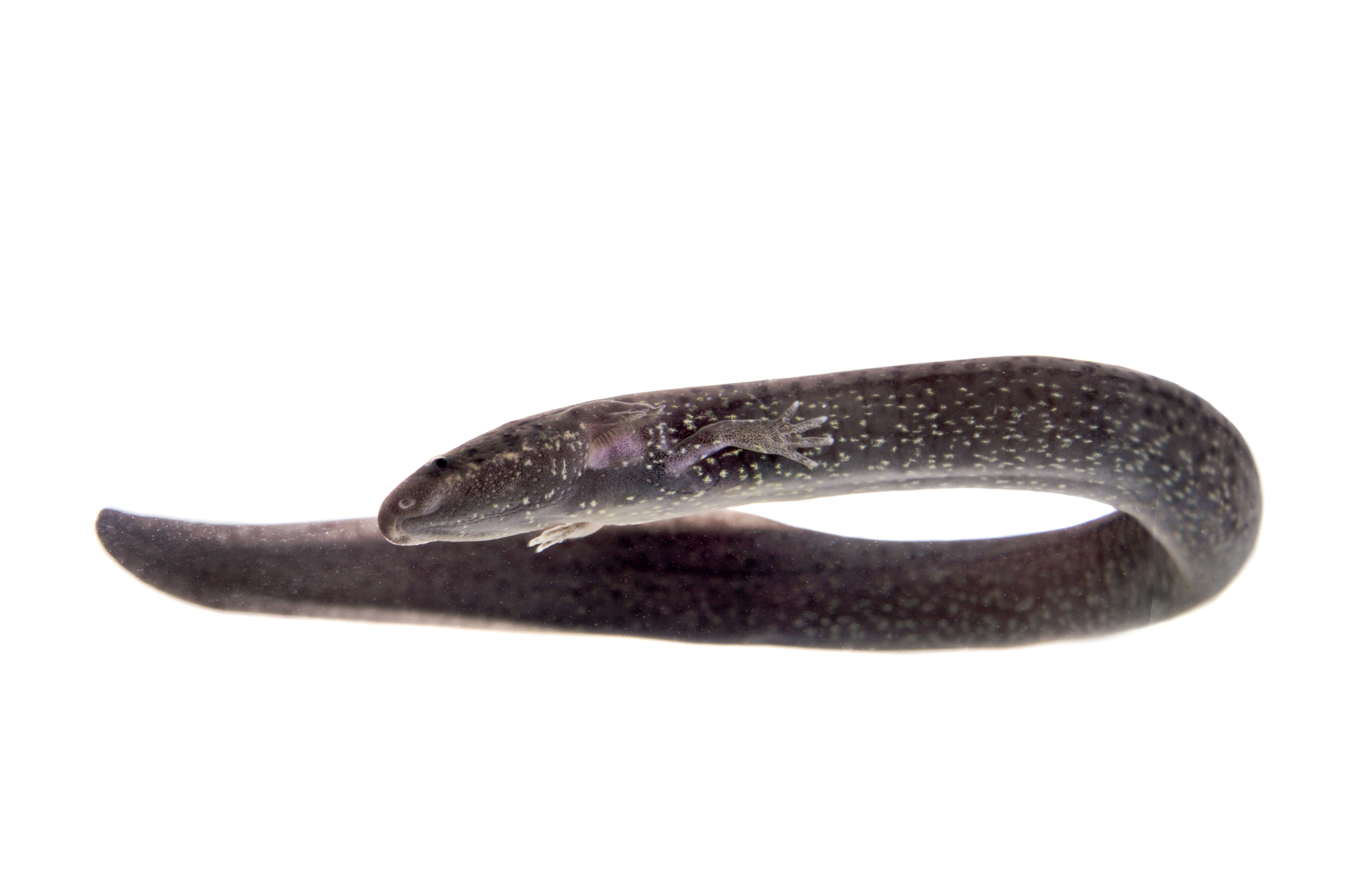Greater siren
(Siren lacertina)

Description
The greater siren (Siren lacertina) is an eel-like amphibian and one of the three members of the genus Siren. The largest of the sirens and one of the largest amphibians in North America, the greater siren resides in the coastal plains of the southeastern United States. S. lacertina is paedomorphic, as are all sirens. They lack hindlimbs as well as a pelvic girdle, and have external gills all throughout their lives along with small lungs. They lack eyelids, and have an unfused pectoral girdle. Greater sirens measure around 1.5 cm (0.59 in) in length upon hatching and then grow to lengths ranging from 18 to 97 cm (7 to 38 in). Weight can range from 55 to 1,000 g (1.9 to 35.3 oz). Coloration varies throughout their range, but they are generally an olive or gray color with small yellow or green dots on their sides. They have about 36 to 40 costal grooves between their armpits and their cloaca. Younger sirens also have a light stripe along their sides, which fades with age. The front legs, each with four toes, are so small that they can be hidden in the gills. In terms of sensory organs, greater sirens rely on both a modified Jacobson's organ and a lateral line system over their small eyes. It is possible that they are capable of sensing disturbances in electrical fields. Greater sirens are carnivorous and prey upon invertebrates (such as insects, crustaceans, gastropods, bivalves, spiders, molluscs, and crayfish) and aquatic vertebrates (such as small fish) with a possible preference for molluscs, although they have been observed to eat vegetation such as algae. They are nocturnal and spend the day in dense vegetation. They inhabit the coastal plain from Washington, D.C., to Florida and Alabama. A population of sirens in the Rio Grande has been tentatively determined to be S. lacertina. Greater sirens live in wetlands, preferring those with a slow or nonexistent current and a thick layer of organic material. They are capable of inhabiting seasonal and permanent wetlands given their ability to aestivate, and will burrow into mud if their wetland dries up. Associated habitat for greater sirens includes vegetative ditches, and various other forms of slow, or stagnant bodies of water. Often during the day, they seek refuges from predators and are found under logs and various other structures.
Taxonomic tree:







